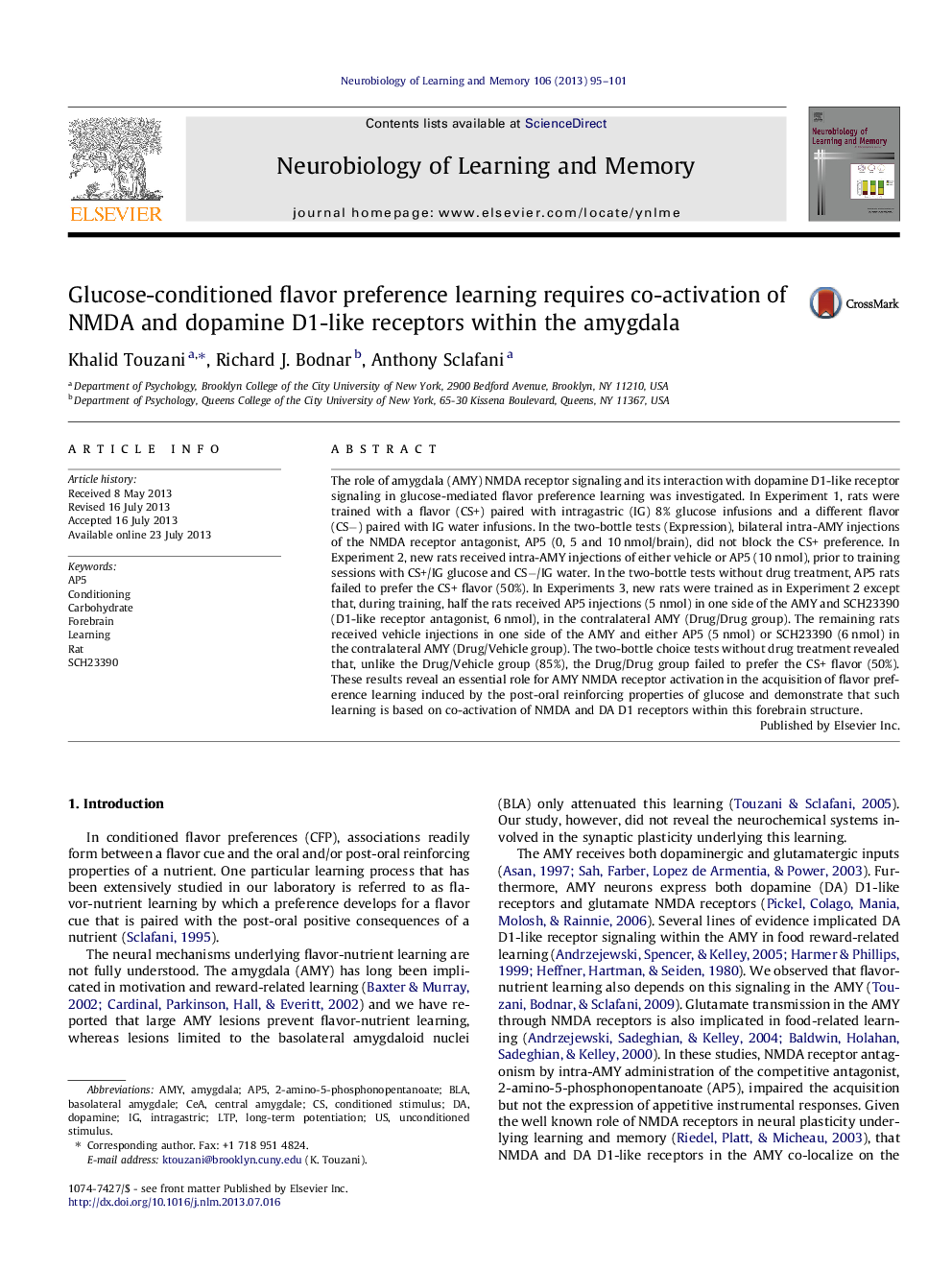| کد مقاله | کد نشریه | سال انتشار | مقاله انگلیسی | نسخه تمام متن |
|---|---|---|---|---|
| 936595 | 1475169 | 2013 | 7 صفحه PDF | دانلود رایگان |

• AP5 in the AMY during training prevented the acquisition of glucose-CFP.
• AP5 in the AMY during testing did not affect the previously acquired glucose-CFP.
• Uncoupling of NMDA and dopamine D1 receptors within AMY prevented glucose-CFP.
• Co-activation of NMDA-dopamine D1 receptors is necessary for glucose-CFP.
The role of amygdala (AMY) NMDA receptor signaling and its interaction with dopamine D1-like receptor signaling in glucose-mediated flavor preference learning was investigated. In Experiment 1, rats were trained with a flavor (CS+) paired with intragastric (IG) 8% glucose infusions and a different flavor (CS−) paired with IG water infusions. In the two-bottle tests (Expression), bilateral intra-AMY injections of the NMDA receptor antagonist, AP5 (0, 5 and 10 nmol/brain), did not block the CS+ preference. In Experiment 2, new rats received intra-AMY injections of either vehicle or AP5 (10 nmol), prior to training sessions with CS+/IG glucose and CS−/IG water. In the two-bottle tests without drug treatment, AP5 rats failed to prefer the CS+ flavor (50%). In Experiments 3, new rats were trained as in Experiment 2 except that, during training, half the rats received AP5 injections (5 nmol) in one side of the AMY and SCH23390 (D1-like receptor antagonist, 6 nmol), in the contralateral AMY (Drug/Drug group). The remaining rats received vehicle injections in one side of the AMY and either AP5 (5 nmol) or SCH23390 (6 nmol) in the contralateral AMY (Drug/Vehicle group). The two-bottle choice tests without drug treatment revealed that, unlike the Drug/Vehicle group (85%), the Drug/Drug group failed to prefer the CS+ flavor (50%). These results reveal an essential role for AMY NMDA receptor activation in the acquisition of flavor preference learning induced by the post-oral reinforcing properties of glucose and demonstrate that such learning is based on co-activation of NMDA and DA D1 receptors within this forebrain structure.
Journal: Neurobiology of Learning and Memory - Volume 106, November 2013, Pages 95–101